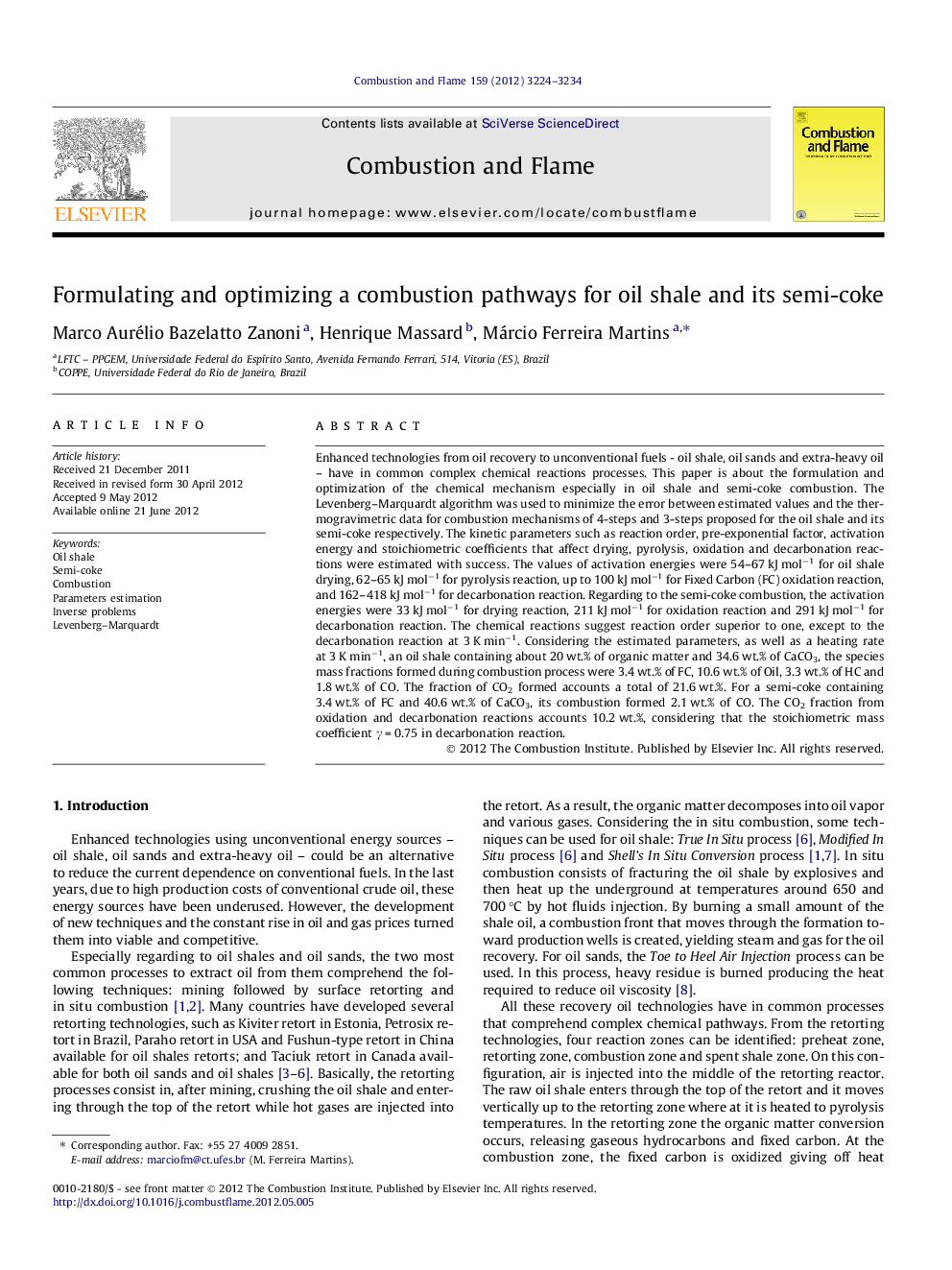| کد مقاله | کد نشریه | سال انتشار | مقاله انگلیسی | نسخه تمام متن |
|---|---|---|---|---|
| 169725 | 458036 | 2012 | 11 صفحه PDF | دانلود رایگان |

Enhanced technologies from oil recovery to unconventional fuels - oil shale, oil sands and extra-heavy oil – have in common complex chemical reactions processes. This paper is about the formulation and optimization of the chemical mechanism especially in oil shale and semi-coke combustion. The Levenberg–Marquardt algorithm was used to minimize the error between estimated values and the thermogravimetric data for combustion mechanisms of 4-steps and 3-steps proposed for the oil shale and its semi-coke respectively. The kinetic parameters such as reaction order, pre-exponential factor, activation energy and stoichiometric coefficients that affect drying, pyrolysis, oxidation and decarbonation reactions were estimated with success. The values of activation energies were 54–67 kJ mol−1 for oil shale drying, 62–65 kJ mol−1 for pyrolysis reaction, up to 100 kJ mol−1 for Fixed Carbon (FC) oxidation reaction, and 162–418 kJ mol−1 for decarbonation reaction. Regarding to the semi-coke combustion, the activation energies were 33 kJ mol−1 for drying reaction, 211 kJ mol−1 for oxidation reaction and 291 kJ mol−1 for decarbonation reaction. The chemical reactions suggest reaction order superior to one, except to the decarbonation reaction at 3 K min−1. Considering the estimated parameters, as well as a heating rate at 3 K min−1, an oil shale containing about 20 wt.% of organic matter and 34.6 wt.% of CaCO3, the species mass fractions formed during combustion process were 3.4 wt.% of FC, 10.6 wt.% of Oil, 3.3 wt.% of HC and 1.8 wt.% of CO. The fraction of CO2 formed accounts a total of 21.6 wt.%. For a semi-coke containing 3.4 wt.% of FC and 40.6 wt.% of CaCO3, its combustion formed 2.1 wt.% of CO. The CO2 fraction from oxidation and decarbonation reactions accounts 10.2 wt.%, considering that the stoichiometric mass coefficient γ = 0.75 in decarbonation reaction.
Journal: Combustion and Flame - Volume 159, Issue 10, October 2012, Pages 3224–3234